Who gets to build the metaverse?
Sanja Kon
CEOReviews
A Glimpse Into the Metaverse: Who gets to build it?
In this article, we delve into the crucial aspects of the metaverse, including its significance, how it is being shaped, and the emerging opportunities within this virtual ecosystem. Additionally, we will address the role of women in developing the metaverse and explore measures to increase their participation.
Our journey begins with a look at the money-web three, a cutting-edge payment technology that facilitates payments from any wallet or exchange, with retailers receiving funds in either fiat or crypto. To set this into perspective, we'll anchor our discussion on the CEO of X Money, a web three-based payment technology firm, and her experiences in the industry.
Understanding the Metaverse
If we delve into the fundamentals of the metaverse, we'll find it is still evolving and holds immense potential for digital disruption, akin to the internet's impact. The metaverse could revolutionize sectors from sales, marketing, product innovation, and community building. However, key questions on the balancing act between the real world and the metaverse remain unanswered.
Interestingly, the concept of the metaverse is often linked with gaming, as it was birthed from this industry. Despite this, it is vital to realize that the metaverse extends beyond the gaming realm. A recent study by McKinsey revealed that almost 60% of consumers and nearly all business leaders anticipate the metaverse's positive influence on their industries within the next 5-10 years.
Moreover, predictions reveal that the metaverse could generate up to $5 trillion in impact by 2030, equivalent to Japan's economy, the world's third-largest. Key sectors ripe for disruption include fashion, luxury, financial services, retail, telecom, media, and healthcare.
Women in the Metaverse
The role of women in shaping the metaverse is vital and intriguing. Current data suggests that more women than men are regarded as 'power users' in the metaverse. Women are keen to engage in hybrid metaverse experiences that blend the physical and digital worlds. In contrast, men lean more toward purely digital engagements.
However, despite women's proactive involvement in the metaverse, they continue to face barriers such as under-representation, limited access to resources, gender bias, lack of awareness, and safety concerns. Thus, concrete measures are necessary to encourage and support women's increased participation in the metaverse.
Role of Cryptocurrencies and Blockchain in Financial Inclusion
Financial inclusion is an aspect where cryptocurrencies and blockchain can play a crucial role. With an estimated 1.7 billion people, mostly women, lacking access to traditional banking services, crypto and blockchain can provide these unbanked individuals a chance to participate in the global economy with ease.
With digital wallets and internet access, underprivileged individuals can engage in financial services like lending, borrowing, and microtransactions without interacting with traditional banking systems. Moreover, using crypto for remittances dramatically reduces the substantial fees associated with traditional money transfer services.
Getting Started
Embarking on a journey into the metaverse need not be intimidating. Social media platforms like Twitter offer a wealth of information, as do events, newsletters, books, and podcasts. Anyone can learn about the metaverse and its associated opportunities.
Companies like X Money, a bridge between the traditional web 2.0 industry and the emerging crypto web 3.0 industry, signify the new paradigm. Such services facilitate a seamless transition between these financial worlds, enhancing opportunities for creators and users alike within the metaverse.
Conclusion
As we advance into the exciting prospects of the metaverse, the importance of fostering increased involvement, particularly among women, stands paramount. By addressing the challenges and creating an inclusive framework, we can all contribute to shaping a diverse and dynamic metaverse.
Video Transcription
Hello, everyone. Uh Thank you so much for inviting me to speak today. So I will be talking about who gets to build the metaverse.So I'll be covering some concepts of what the metaverse is, who gets to shape it some early applications and in particular, what is the role we as women have to play in the metaverse and what can we do to um increase the participation of uh of more women today? So, first of all, um just quickly about me, um I'm the CEO of UT Trusts which has rebranded as you can see from our look and feel into X money. Um So we are a web three based payment technology. We allow anyone to pay from any wallet in the market, any exchange and we allow the merchant or the retailer or whoever gets paid to receive payments in either fiat or crypto. Um We were acquired by Multiverse X in January. Uh Last year previously, the company was called um el. So I'll talk a bit about our plans um later later on. And yeah, prior to working in the web three industry, I was involved mostly in e-commerce projects. And let's say traditional fintech. So in my last two roles, I was head of marketplaces at ebay um and head of marketplace payments at, at paypal in the UK. Um I'm very involved in this space, both as investor um advisor and mentor of several projects.
So very, very passionate and very happy to, to be here um to, to present with all of you. So, um first of all, I just wanted to cover some very fundamental concepts about um the metaverse because really what we can say about the metaverse is that it's still being defined. So even if we have many applications, we have many companies already shaping and using the metaverse.
Um the value of the metaverse is still being defined. So we are still at the very beginning of what the metaverse could be. What we know is that really, it has the potential to unleash the next level of digital disruption, like really like the internet did um a few decades ago. Um And really, it has the impact to it has the, it has the potential to impact several industries and have real life benefits in multiple uh fields and industries really from, you know, think about how we do sales, omni channel, how we market, how we innovate product, how we build the community.
So really infinite potential for here to come. Um However many questions still remain unanswered and are really, you know, investigated as we speak in how we will be able to balance like the this real world with the, with the metaverse. So the physical world with the metaverse in a way that, you know, we ensure that the metaverse is built in an ethical way, um as well, uh can be a controlled experience and um can be a balanced experience with this physical world we live in as well. And of course, many people associate the metaverse with gaming because the metaverse was, was born within the gaming industry, of course. Um But the metaverse is not just gaming and more and more um it will not represent just gaming. So um we believe that the metaverse will be so pervasive in our lives that it can be defined as the next iteration of the internet that will seem is seeming uh seemingly combined in a recent study done by mckinsey uh on consumers and many business leaders. Uh We found out that almost 60% of consumers and individuals are very excited about transitioning their everyday activities to the metaverse and almost all the business leaders. So 99% expect the metaverse to have a very positive impact in their industry of reference within the next 5 to 10 years. Um I'll talk a bit about um the industries that are most likely to be impacted by the metaverse in the next slide.
But this really includes retail telcom media, health care, and many more including the financial system, of course. Um And we also estimate that the metaverse may generate up to five trillion in impact by 2030. So if you think about it, this is equivalent to the size of Japan, uh which is the world's third largest economy today in the world. Um And so as I was saying, the metaverse can create a huge impact across many sectors and industries as you can see here. So for the purpose of time, um I won't have time to deep dive on all of those. Um I am particularly excited about the first two. So fashion and luxury and, and financial services. So why fashion and luxury because, you know, historically, fashion has all the intrinsic values to be disrupted with um with the metaverse because it has both of the components of the online and the offline and what is missing today with ecommerce. So e-commerce is really convenient, however, customers cannot try the items on. So it's a really good way with the metaverse to combine these two worlds together and many companies are already experimenting with metaverse, especially with, with NFTS. Um So last year, Adidas did a partnership with Board Apes which resulted in more than 100 million sales. Um And I believe with NFTS, um there is huge opportunity to use them, let's say for more um real life application.
So for example, for digital twins, so imagine in a digital twin um for luxury brands to combat counterfeit the NFT can store information about the history of the item about the authenticity, the ownership of the item. So it can really disrupt the way um luxury brands are um combating counterfeit, for example, um nfts can also be used uh for loyalty as many brands are already experimenting. So the potential of this industry is is huge. Um And of course, financial services for me at least is even more exciting because um new method verse products, new matter verse services will emerge and they will be combined with the whole concept of D I so decentralized finance, where we have, you know, peer peer interaction, where we have services like lending and borrowing, where we don't need to interface with, you know, a traditional bank, a traditional financial intermediary and all of these experiences will have immersive brand engagement.
So, um I'm really excited about this particular segment as well. Um And of course, you know, even though the metaverse exists today without web three and it's opening new opportunities for creators to create and users to engage, you know, we believe that web three enable metas will further advance these opportunities to a really higher level.
And you know, w what is it? So web three is composed of a decentralized ecosystem in which finally users can begin to own and monetize their data because in web two, they, they don't own their, their data. So this is a fundamental difference. Um and really creators can monetize their content and talents in many different ways in the metaverse. Um And this web three economy and this web three metaverse is really enabled by three main technologies. One is of course the Blockchain and the Blockchain is offering a universal, a permanent public and a single source of truth. Um The second technology are smart contracts and they contain um conditional programming code. Uh so it can create utility to facilitate self executing applications.
And that means that you don't need a human being. So the applications can self execute themselves through code. And last but not least digital assets that are issued on a Blockchain. Um And they represent value portability and, and permanence. And so, you know, as a result, metaverse applications that are built on web three will benefit from more functionality, transparency permanence from more interoperability um than their traditional web uh web 2.0 experiences, let's say. Um so now that we saw what the metaverse is and you know, what are some of the applications that it can have in the future? Um I really wanted to look into how are women represented in the metaverse. Um And what are especially the opportunities for, for women today? Um And really what data tells us is kind of surprising because this is again, um a research done by mckinsey in which we can see that more women than men are power users in the metaverse. And how do we define a power user? Is anyone that is using um mes applications for more than three hours per week. So, as you can see, 35% are women are doing so and 29% of men. And that's really interesting. And not only that we saw that women have a different customer behavior than men as well because women are more likely than men to engage in what we call hybrid. Um, use cases in the metaverse.
So that means um experiences that are encompassing both um the physical and the digital world to take part in activities such as events or fitness or shopping via a VR or education and gaming. And by contrast, men are using the metaverse to participate in purely digital experiences.
So they do trading, they do gaming, they use um NFTS and they attend social events without the physical part of it. So also there is a fundamental difference in in customer behavior um between, between the two genders. We also saw that, you know, within a survey of executives, more female executives are likely um than their male counterparts to have implemented multiple metaverse initiatives in their companies. So as we can see, uh more than 60% of women have implemented two or more initiatives and 50% 50% of men. Um and the top initiatives being implemented by the senior executives are marketing initiatives, um organizing meetings or events in the metaverse conferences, employee learning and product design or digital twinning. Um As we saw before. Um So, unfortunately, even if we saw that, you know, women are more proactive about implementing Metaverse initiatives than men, um They're more proactive in being power users of the metaverse. Um They are still locked out of leadership roles in the metaverse economy. Um And basically, as you can see over the past five years, the metaverse companies that receive higher shares of funding were very disproportionately led by men. So more than 90% of companies were, were led by men.
Um And also within the organizations that participate in the metaverse forums um that currently are shaping the future of, you know, how the metaverse will be built are also disproportionately led by men. Um So only eight, between eight and 10% of this organization are led by um led by women. And this is actually not surprising because if we compare this to Fortune 500 companies in the world, we can see a very similar percentage in the Fortune 500 companies, we have around 9% or so of companies that are led by women. So, you know, despite the opportunities huge, despite, you know, um more women and are leading initiatives and taking part, there is still a big gender gap to be surpassed and there's still a lot of work that we as individuals and companies in the space need to do in order to help more women um get on board.
So I really went into looking you know, what are some of some of the barriers of entry for, for women in the metaverse to better understand, you know, what's driving this behavior. And you know, things are very simple and we need to talk about it. So the first is lack of, of representation overall. So this is true for whole industry. And if you look into even tech and fintech, but then, you know, the very essence of web three and the metaverse, predominantly companies are, are led by men. And therefore, you know, women might have the perception that they're not welcome or they're not very uh very well represented in the space. Secondly, access to resources and this includes a as we saw before uh funding. So most of the funded companies are led by men, but also access to particular trainings or skills or, you know, mentorship done for women um to other women. Gender bias is still very prevalent um in the industry and this can be, you know, conscious or unconscious bias, but it's still very prevalent and this might, you know, prevent women to get jobs or be considered for, for opportunities. Um Lack of awareness means that, you know, particularly in um some places in the world, women might not even be aware of how to enter in this world and you know, what are the opportunities and where they can start and last but not least harassment and safety concerns.
So this is true, like especially if you think about gaming. Um female gamers. Um really, you know, two out of three young female gamers today um are saying that they are being harassed or they have, you know, safety concerns uh of a certain matter in the space. So women are more likely than men to be to be harassed in this, in this environment. And therefore, you know, what can we do as companies, as individuals to help more women get involved? Um And to help more women get interested and on boarded in, in this space. Um And again, the concepts are very simple, but you know, sometimes the most very simple concepts, we know them, but we don't do nothing about them. We don't allocate time, we do not prioritize them. Um And first is really to, to increase representation. So what does that mean for us in our company, for example, is that, you know, I actively want to have for every single position that I'm opening in the company, um an equal or similar number of CV S that I can consider from a woman and from a man so that I can choose from a more diverse pool.
And sometimes this is not to be taken for granted because even if you work with external recruiters, you might not receive enough CV S. And so, you know, as leaders in a company, we need to actively go out and look for these people and give them opportunities. And this is not only representation in, in roles, but also how can we um make sure that more women are represented in panels and speaking opportunities. So whenever there is an event, we have again, a diverse pool of candidates that is representing a company or a project, we need to provide more resources and support for women. And this, you know, not only includes uh funding but includes things like, you know, training specific mentorship to help more women get on boarded. Um We need to start talking and addressing gender bias and really, you know, build cultures where it's not acceptable and where we explain what um what gender bias is and how to, how to address it and how to report it in a company. Um And the same is with, you know, creating more safe and welcoming spaces. Um So this might include, you know, for anyone building in the metaverse, uh implementing a code of conduct, conduct and, you know, ethical code of conduct um of how technology is built.
And again, what is acceptable and what is not acceptable. Um And last, but not least, really increase awareness of opportunities so that, you know, more women are aware um and more women get interested as well. Also, I believe um cryptocurrencies and Blockchain will pay will play a fundamental role for financial inclusion. And really, um if you think about it, 1.7 billion people in the world are unbanked, meaning they, they cannot have access to any sort of, you know, traditional bank or traditional financial service. Plus an additional one point 1 billion adults remain underbanked. Meaning they might not have, you know, access to the full spectrum of um of banking services. For example, they might get lock out of, you know, lending and borrowing. So and most of these people in the world are women. So depending on, you know, what geography, what country are we talking about? We're talking about 55 to 70% of those adults being women. Unfortunately, and here um cryptocurrencies and Blockchain technology really plays a fundamental role in supporting these people in supporting these unbanked women um with a few things, one financial inclusion. So what does this mean?
It means that today just by having a device and an internet connection, you can have a crypto wallet and you can start participating in the global economy. For example, you don't need to interact with a bank, you don't need to open a bank account. And it's very simple as long as there is awareness for someone to, to download a crypto wallet to have crypto and to start really participating in the economy and owning their money. The second one is dey so decentralized finance, meaning that, you know, I can finally have services like lending and borrowing without having to interact with a bank or you know, a traditional player, financial player of any kind and everything is peer to peer, everything is decentralized.
Micro transactions can be used with crypto and as we know, especially in, in, in emerging um countries, um micro transactions are what represents like 80 to 90% of the payments for these people. Um And of course, remittances. So what is the Remittance is when, you know, an individual or a company but mostly an individual is sending money back home. Um And you know, by using services in the traditional industry like moneygram and, and similar, um people can end up paying, you know, 15 to 20% in, in fees. And with crypto, everything really becomes um immediate and at a fraction of the cost. So really the role of crypto is fundamental into shaping what will financial inclusion mean um for the next few years and, and decades and really this can help um more women um get out of the their unb banking um state. Um And so just a couple of slides to, to conclude so many times I get asked like, where can I start? What can I do? Um And people might think that, you know, you need to have a lot of skills before starting before applying to a job. But really, you know, you, you need to start small also because this is an industry that is currently being defined. So it's never too late. On the contrary, um it's really early to start, you know, getting on board now to start learning about it.
And I think, you know, Twitter is an amazing platform where, you know, you can start listening to um people, to influencers to companies operating in the space and you know, absorb information real time. There are also many, many events where you can participate for free in order to hear about the trends of, you know, web three and the metaverse. So I really encourage you to subscribe to um as many of them as you can. And of course, really simple things like signing up to relevant newsletters. So I put here three that I'm using. So the Defiant and the metaverse are more um focused on me metaverse. While on inside, you can basically choose to have multiple daily newsletters on different topics from crypto at three metaverse to um um other others like um start ups and financial and, you know, uh a a lot of them. Um and then of course books and podcasts. So I left you here some resources if you wanna, if you wanna read them, if you wanna start listening to them, I think, you know, there are um good places where you can, you can see, you can hear a lot of information about, you know, what the metaverse is and um what are some of the opportunities for, for the future and last, but not least, of course, uh what we do.
So, as I said at uh at the beginning, you trust his rebranding into X Money. Um as you can see and X money is really a bridge between fiat so between the web two industry and the crypto um web three industry. So it's a bridge into um the multiverse into, you know, what many meta verses can encompass together. Um And there are and there, there will be many applications of this, but you know, combining these worlds together becomes essentially very important. So imagine anyone like a creator getting paid in the metaverse for their services and they get paid in crypto or NFTS, for example, with our service, they can immediately convert that crypto into fiat and they can go in a shop and they can buy, you know, any sort of um goods and service with, with fiat money.
So it's really a way to have a global digital payments network for everything. Money because money needs to encompass everything. So if you're interested in learning more um about us, um you can head on to uh Multiverse x.com or X money.com and you can learn about the additional products and the new metaverse forward products that, that the team is implementing all the time. So thank you so much for the time. Uh It's been lovely to talk here today and see you soon.


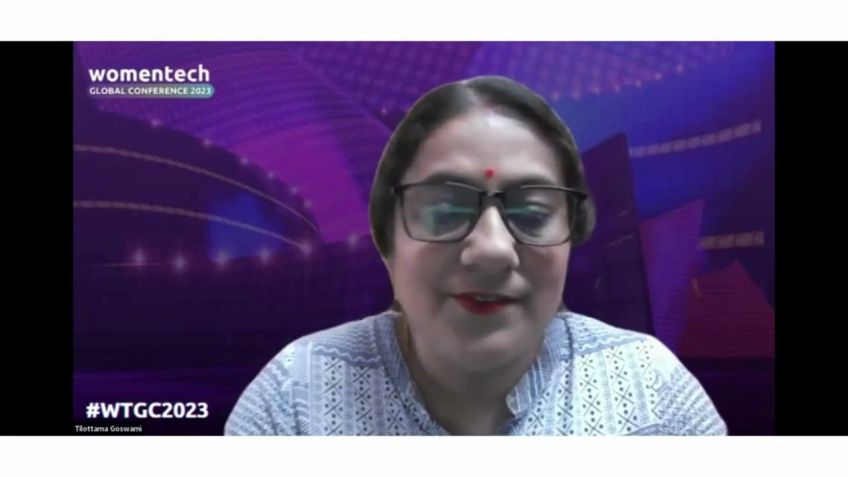
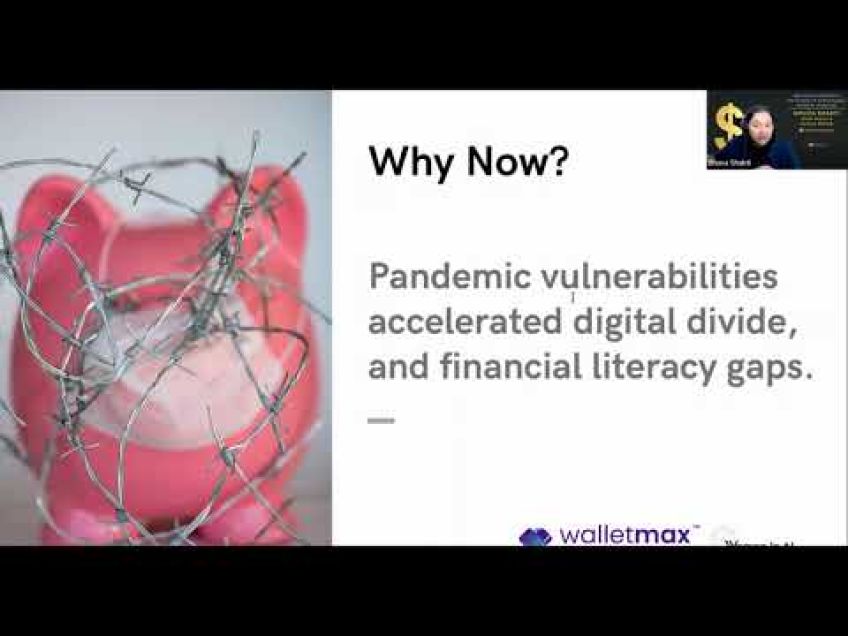
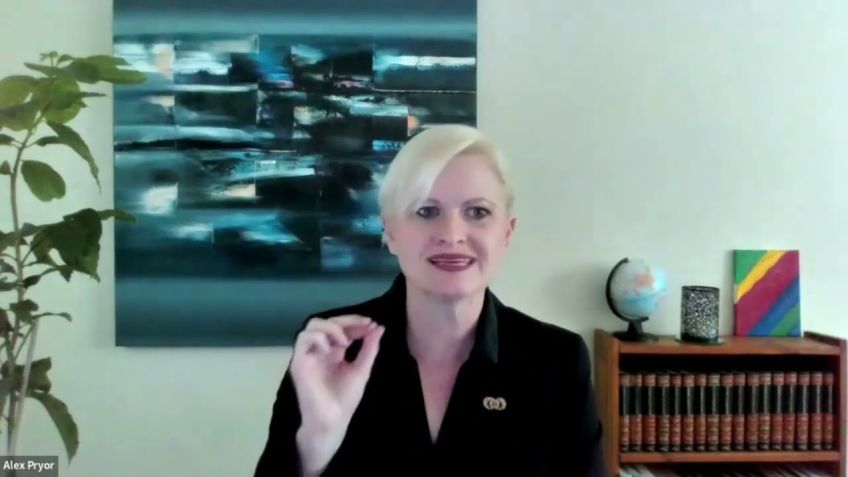
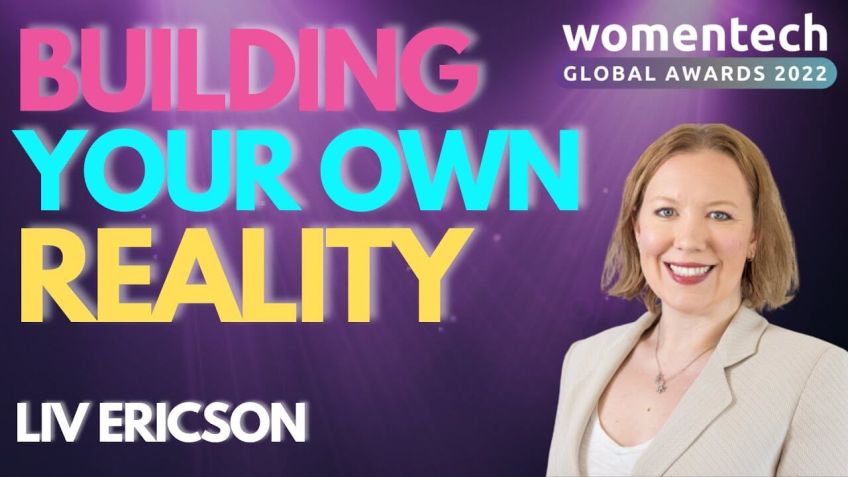
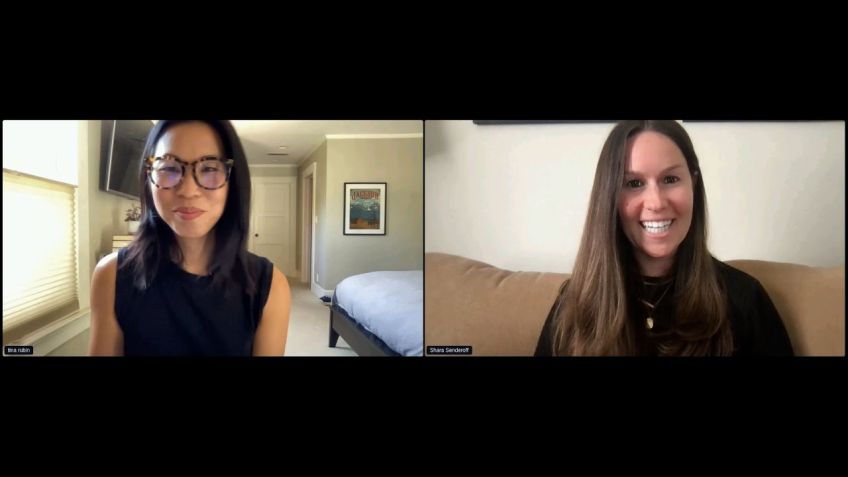
No comments so far – be the first to share your thoughts!